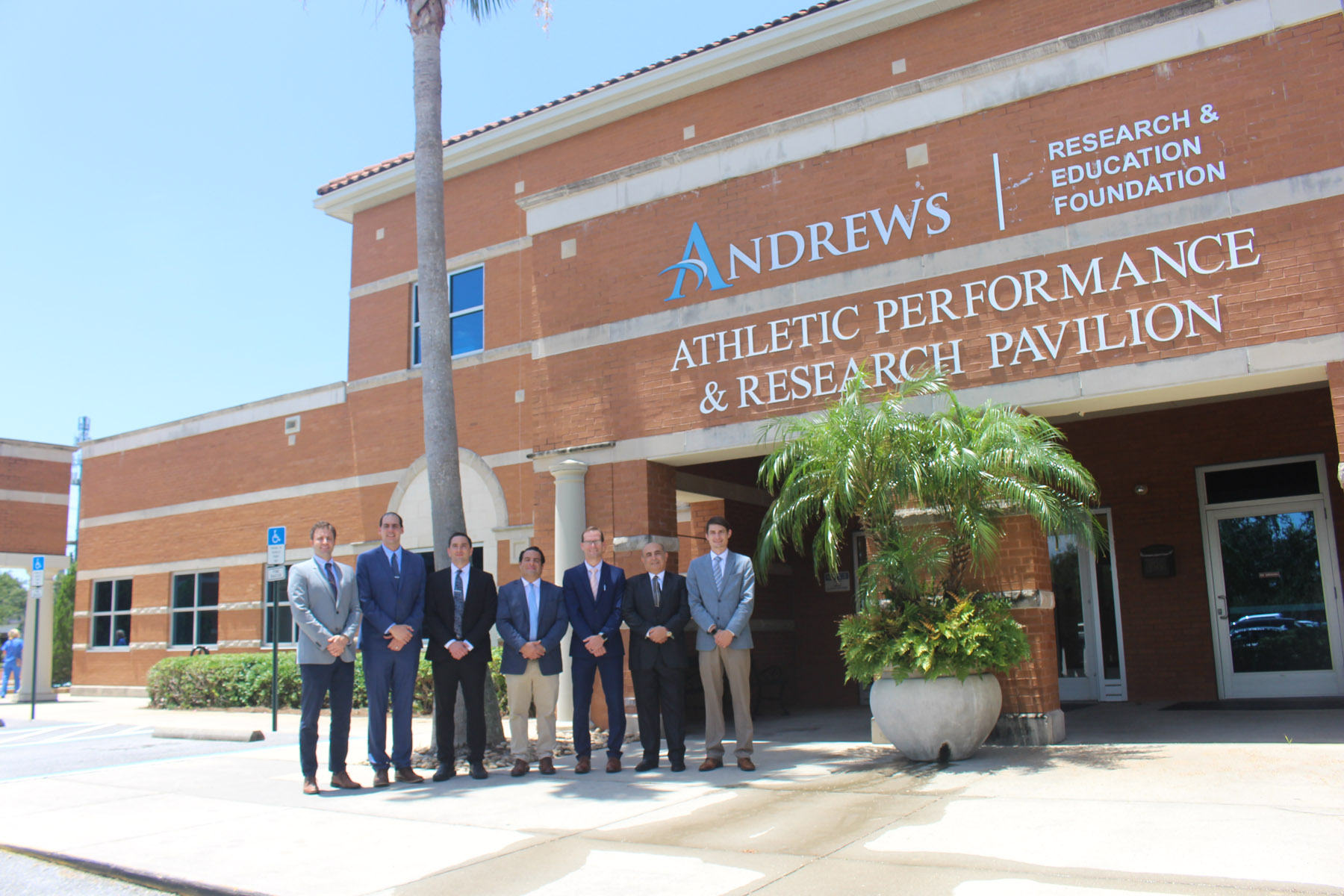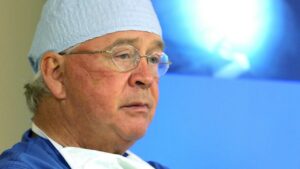Excellence and Innovation Define Andrews Research & Education Foundation
World-renowned orthopedic surgeon Dr. James R. Andrews is often highlighted on major sports networks, credited for saving the careers of professional athletes, and cited in national and international medical journals. But his most important accomplishment may be the constant drive for innovation and improvement he inspires in his colleagues.
Pensacola-based Andrews Research & Education Foundation is one of Andrews’s accomplishments that is quietly changing the orthopedic and sports medicine industry. The research arm of the Andrews Institute, this foundation is undertaking ground-breaking research normally reserved for major biotech companies or large universities.
One of the local doctors engaged in the research at AREF is Dr. Adam Anz. As a highly sought-after orthopedic surgeon, Anz works full time performing surgery and helping his patients as his “day job.” But he is also leading several research projects looking to improve how those patients can recover and sustain their health over the long-run.

One such study is sponsored by the State of Florida to look at ways to improve patient outcomes after ACL reconstruction surgery of the knee. According to Anz, 85% of patients develop some type of arthritis, known as Post-Traumatic Osteoarthritis (PTOA) within 15 years of ACL surgery. Traditional thinking accepted this long term cost as the price for serious damage.
Leading With Innovation
At the Andrews Research & Education Foundation, traditional thinking isn’t enough. Anz says orthopedic surgeons are great at repairing the structure of the knee, or as he calls it, the carpentry. But what the industry hasn’t kept up with is the actual biology of how the body responds over the long-run to the injury itself and the trauma of the surgery.
“When you have that injury event, your immune system ramps up with an initial inflammatory response, and that response completely affects that part of your body afterwards.”
Dr. Adam Anz
One way to minimize those immune system impacts might be platelet-rich plasma, or PRP, says Anz. While in medical school, Anz learned about – and worked on – international studies suggesting that the use of the body’s cells (known as biologics) could help post-surgical outcomes in both the long and short term. He was determined to bring these ideas back to the U.S. and prove in trials sanctioned by the FDA and medical Institutional Review Boards (IRB) that using the body’s own cells, in this case platelet rich plasma (PRP), can help patients heal better.
“How can we manage the biology as much as the carpentry of the situation? How can we utilize some of these tools that are readily available in our own bodies? Platelet rich plasma is basically me taking your blood, minimally manipulating it, and then using it to affect your immune system, which is your body’s reaction and maintenance system. So we can use these biologics, whether it be PRP or cells to manipulate your immune system, to help set the table for our stabilization procedures.”
The study currently underway at AREF uses state-of-the-art equipment often found only at major research institutions. These include the enzyme-linked immunosorbent assay (ELISA) testing, as well as flow cytometry to track the impact of PRP before, during, and after surgery to see if those arthritis-producing inflammatory biomarkers are present. If this stage of research shows clinically significant results, then longer term studies will begin.
The Path to Pensacola
Following medical school, Anz wanted to work for an institution that fit his desire to help patients, but that would also support his drive to find the next advancements in orthopedic medicine. It just so happened that Anz found an orthopedic practice that was just as interested in advancing orthopedic research as he was. That practice was with legendary orthopedic surgeon, Dr. Jim Andrews.
“After medical school, I ran into Dr. Andrews and he said, ‘Hey, we’re really excited about our facility down in Pensacola, Florida and we’re trying to do research there. We know that the first great advancement in sports medicine was the arthroscope, the camera that helps us look inside the joint, and we think that stem cells and biologics is going to be the next. Why don’t you come down here and help us do some research in that space?’”
As Anz says, “sometimes you don’t find your path, your path finds you.”
This state-funded investigation, along with other research trials happening at the Andrews Research and Education Foundation, are driving a real change in the way orthopedic surgeons approach their work. But what really makes AREF truly innovative is the environment of collaboration, generosity, and sharing from the lab to the clinic to the patient and back again. A supportive community is important too, and local patients participate in finding breakthroughs of clinical significance. And until Dr. Anz knows your ACL isn’t going to just be better for a year or two, but for twenty years he’s likely to stay pretty busy.



